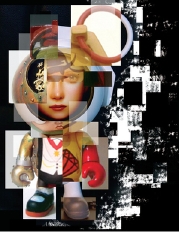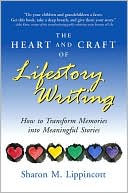My new friend Sharon Lippincott of The Heart and Craft of Lifestory Writing has joined with Jerry Waxler to start a Yahoo-based discussion group for those interested in lifestory writing. Although my interest in that area is embryonic at best, I’ve joined the group and am impressed with the warm and generous spirit its founders and members convey.
You can join here, and in the extended portion of this entry, I have also borrowed (stolen) QUITE liberally from Sharon’s site to further explain the group. Here’s the first part of Sharon’s invitation:
Calling All Life Writers
There is good news for anyone who would like to hang out with other people who write life stories, memoir, journals, personal essays, or other forms of recording their lives in writing. Whatever your reason for writing about your life, the newly formed Life Writers Forum is a great place to ask questions, share thoughts, post short stories or excerpts from longer works, and generally shoot the breeze about writing.
The rest of Sharon’s invitation:
I am hosting this new YahooGroup together with Jerry Waxler, author of the Memory Writers Network blog. Jerry and I have started Life Writers Forum because there is no similar gathering place in Cyberspace for those who are involved with life writing. With people getting busier than ever and energy costs soaring, the time is right for joining something you can squeeze into your already tight schedules any time you have a few minutes. You don’t have to drive to any meetings, and best of all, there are no membership fees.
Whether you are still wondering about the difference between autobiography and memoir or have several memoirs published, this is the place for you. Everyone knows that beginners benefit from the advice of seasoned mentors, but it isn’t so well known that newbies’ ideas can help veterans keep our writing fresh and our minds open.
We hope you’ll join us to generate lots of lively discussion about various aspects of writing. Below are examples of topics we love:
- Writers-block busters
- How to add punch to stories
- Sorting memories and them together
- How to handle touchy topics without getting sued!
- Posting short pieces for feedback
- Markets for stories
- Working with agents and publishers
- Self-publishing vs. commercial
- Overcoming writers block
- Reviews and recommendations of published memoirs and books on writing
- Classes, workshops and retreats for life writers
These are only suggestions to get you thinking. Hopefully you’ll add lots more to the mix. One of the great things about virtual groups is the diversity of view points they generate, and the support they can offer.
There are two ways to join. You can go to the homepage for the group and join from there, or send a blank e-mail to lifewritersforum-subscribe@yahoogroups.com (no human eyes will see this, so don’t waste your time composing a message). Although you can join by e-mail without one, if you already have a Yahoo ID (as in Yahoo e-mail address), you can read previous messages in the message archives on the group website. If you don’t have one, it’s worth setting one up. You can use any name you want (as long as nobody else is using it), so make it fun if you wish.




